Showing Spotlights 41 - 48 of 262 in category All (newest first):
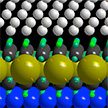 Two-dimensional (2D) semiconductors, like transition-metal dichalcogenides, have become a competitive alternative to traditional semiconducting materials in the post-Moore era, and caused worldwide interest. However, before they can be used in practical applications, some key obstacles must be resolved. One of them is the large electrical contact resistances at the metal-semiconductor interfaces. Researchers have proposed a brand-new contact resistance lowering strategy of 2D semiconductors with a good feasibility, a wide generality and a high stability.
Two-dimensional (2D) semiconductors, like transition-metal dichalcogenides, have become a competitive alternative to traditional semiconducting materials in the post-Moore era, and caused worldwide interest. However, before they can be used in practical applications, some key obstacles must be resolved. One of them is the large electrical contact resistances at the metal-semiconductor interfaces. Researchers have proposed a brand-new contact resistance lowering strategy of 2D semiconductors with a good feasibility, a wide generality and a high stability.
Sep 5th, 2022
 Researchers introduce spin orbit torque (SOT) devices to experimentally realize in-memory analogue mathematical operations such as summation, subtraction and four-quadrant multiplication, to implement general-purpose applications such as image or signal processing for edge computing. In addition to nonvolatility and scalability, the CMOS-compatible SOT technique further possesses low energy consumption, high speed and endurance. Therefore, SOT devices offer an avenue for dense in-memory analogue computing paradigms.
Researchers introduce spin orbit torque (SOT) devices to experimentally realize in-memory analogue mathematical operations such as summation, subtraction and four-quadrant multiplication, to implement general-purpose applications such as image or signal processing for edge computing. In addition to nonvolatility and scalability, the CMOS-compatible SOT technique further possesses low energy consumption, high speed and endurance. Therefore, SOT devices offer an avenue for dense in-memory analogue computing paradigms.
Aug 16th, 2022
 The goal of the electronics industry has always been to build durable devices with stable performance that last a very long time. Self-destructing, transient electronics however, are designed with the exact opposite goal: to dissolve harmlessly into their surroundings after functioning for a predetermined amount of time. Researchers now demonstrate novel biodegradable, recyclable, conductive, flexible, and printable materials that can be applied across many electronic devices to serve as a cornerstone for the development of ecofriendly and recyclable electronics.
The goal of the electronics industry has always been to build durable devices with stable performance that last a very long time. Self-destructing, transient electronics however, are designed with the exact opposite goal: to dissolve harmlessly into their surroundings after functioning for a predetermined amount of time. Researchers now demonstrate novel biodegradable, recyclable, conductive, flexible, and printable materials that can be applied across many electronic devices to serve as a cornerstone for the development of ecofriendly and recyclable electronics.
Jun 22nd, 2022
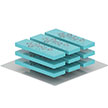 Organic semiconductors (OSCs) are a class of semiconductor materials consisting of conjugated molecules or polymers. Compared to inorganic semiconductors, OSCs have distinctive advantages including being solution-processable, suitable for low-cost and large-area fabrication of electronics, and applicable to flexible/stretchable electronics, among others. Given the importance of doping techniques for semiconductors, it is highly attractive to establish doping methodologies for OSCs similar to that for silicon. This would simplify the difficulty and cost of synthesizing different types of OSCs for various applications, as well as lead to interesting structures such as organic PN homojunctions.
Organic semiconductors (OSCs) are a class of semiconductor materials consisting of conjugated molecules or polymers. Compared to inorganic semiconductors, OSCs have distinctive advantages including being solution-processable, suitable for low-cost and large-area fabrication of electronics, and applicable to flexible/stretchable electronics, among others. Given the importance of doping techniques for semiconductors, it is highly attractive to establish doping methodologies for OSCs similar to that for silicon. This would simplify the difficulty and cost of synthesizing different types of OSCs for various applications, as well as lead to interesting structures such as organic PN homojunctions.
Jun 9th, 2022
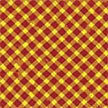 To realize the full potential of DNA nanotechnology in nanoelectronics applications requires addressing a number of scientific and engineering challenges: how to create and manipulate DNA nanostructures? How to use them for surface patterning and integrating heterogeneous materials at the nanoscale? And how to use these processes to produce electronic devices at lower cost and with better performance? These topics are the focus of a recent reviewarticle.
To realize the full potential of DNA nanotechnology in nanoelectronics applications requires addressing a number of scientific and engineering challenges: how to create and manipulate DNA nanostructures? How to use them for surface patterning and integrating heterogeneous materials at the nanoscale? And how to use these processes to produce electronic devices at lower cost and with better performance? These topics are the focus of a recent reviewarticle.
Feb 17th, 2022
 Negative differential resistance (NDR), which describes a decrease in electrical current as the applied bias increases, has always been one of the hottest topics in solid-state electronic devices since L. Esaki first demonstrated this phenomenon in heavily-doped Ge p-n junctions in 1958. Researchers now report the modulation of a unique room-temperature NDR effect with high peak current in ambipolar black phosphorus transistors. The simplicity of this structure, combined with the recent progress in scalable production of BP films, makes the BP NDR devices promising for practical electronic applications.
Negative differential resistance (NDR), which describes a decrease in electrical current as the applied bias increases, has always been one of the hottest topics in solid-state electronic devices since L. Esaki first demonstrated this phenomenon in heavily-doped Ge p-n junctions in 1958. Researchers now report the modulation of a unique room-temperature NDR effect with high peak current in ambipolar black phosphorus transistors. The simplicity of this structure, combined with the recent progress in scalable production of BP films, makes the BP NDR devices promising for practical electronic applications.
Aug 10th, 2021
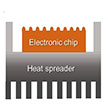 Heat dissipation has increasingly become a bottleneck for modern electronics. In particular, the development of wide bandgap semiconductor devices has led to many advancements of high power and high frequency electronics Scientists now have integrated new super thermal conductors - boron arsenide and boron phosphide that they developed recently - as a thermal substrate for power electronics devices such as gallium nitride high electron-mobility transistors. The study demonstrates high cooling performance better than the best state-of-the-art technologies.
Heat dissipation has increasingly become a bottleneck for modern electronics. In particular, the development of wide bandgap semiconductor devices has led to many advancements of high power and high frequency electronics Scientists now have integrated new super thermal conductors - boron arsenide and boron phosphide that they developed recently - as a thermal substrate for power electronics devices such as gallium nitride high electron-mobility transistors. The study demonstrates high cooling performance better than the best state-of-the-art technologies.
Jul 9th, 2021
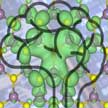 Nonvolatile resistive memory (NVRM), also called a 'memristor', is an emerging technology that offers the possibility of in-memory computation and thus holds promise to overcome the von Neumann bottleneck. NVRM is a two-terminal device but, unlike an ordinary resistor, it exhibits hysteresis in input-output characteristics and thus can be also be used as memory. A new theory suggests that such resistive switching is an intrinsic property of a vacancy-inhabited two-dimensional materials and may not depend on the physio-chemical interactions with the electrodes.
Nonvolatile resistive memory (NVRM), also called a 'memristor', is an emerging technology that offers the possibility of in-memory computation and thus holds promise to overcome the von Neumann bottleneck. NVRM is a two-terminal device but, unlike an ordinary resistor, it exhibits hysteresis in input-output characteristics and thus can be also be used as memory. A new theory suggests that such resistive switching is an intrinsic property of a vacancy-inhabited two-dimensional materials and may not depend on the physio-chemical interactions with the electrodes.
Mar 24th, 2021
 Two-dimensional (2D) semiconductors, like transition-metal dichalcogenides, have become a competitive alternative to traditional semiconducting materials in the post-Moore era, and caused worldwide interest. However, before they can be used in practical applications, some key obstacles must be resolved. One of them is the large electrical contact resistances at the metal-semiconductor interfaces. Researchers have proposed a brand-new contact resistance lowering strategy of 2D semiconductors with a good feasibility, a wide generality and a high stability.
Two-dimensional (2D) semiconductors, like transition-metal dichalcogenides, have become a competitive alternative to traditional semiconducting materials in the post-Moore era, and caused worldwide interest. However, before they can be used in practical applications, some key obstacles must be resolved. One of them is the large electrical contact resistances at the metal-semiconductor interfaces. Researchers have proposed a brand-new contact resistance lowering strategy of 2D semiconductors with a good feasibility, a wide generality and a high stability.
 Subscribe to our Nanotechnology Spotlight feed
Subscribe to our Nanotechnology Spotlight feed





